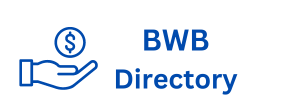Since the days the first web pages sprouted up over public access to the Internet, design has evolved. For one thing, it takes a great deal more strategy to succeed today thanks to the immense amount of competition. As a result, you need to pay more attention to website design best practices.
Web pages are no longer simply pieces of information about a product, service or brand. They need to offer engagement and be a part of your customer’s experience.
Here are 17 website design standards and best practices for 2018. And some of them may continue for years to come.
1. Implement a Blog
Blogging is a way to engage an audience while bringing attention to your brand. It’s a way to offer something free to the visitor, which is often influential in creating a conversion if the content resolves a problem or answers a question.
According to WordPress.com, blogs receive more than 20 billion page views each month on the brand’s network. And that’s not including other blogging platforms on the Internet.
It’s such an effective way to boost a brand that most companies offer this style of in-depth and relevant content nowadays. It’s all accurate mobile phone number list about engaging the reader and giving them something of quality to remember.
For example, you’re reading one right now.
2. Keep Branding a Priority
Most website developers will include seo trends 2024 a company logo somewhere in the design that remains static. This means it’s viewable from virtually every page. However, branding goes beyond just making sure the logo is visible.
Company name, imagery and even the content itself need to be forms of branding. Of course you don’t want it to seem too bulk lead salesy. But it’s still important that your visitors keep your business in mind throughout the site.
Think of it like offering visitors a story behind your business and what it represents. Then carry that emotion throughout the site and its design.






